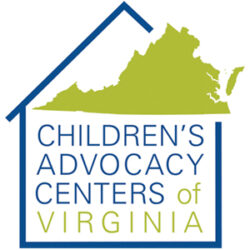- More than 800,000 children are confirmed as victims of abuse or neglect each year in the U.S.
- Neglect is the most common form of child maltreatment, followed by physical abuse
- Younger children (ages 0-6) are the most vulnerable to abuse
- One in four girls and one in seven boys will be sexually assaulted before they reach the age of 18
Perpetrators often consist of family members, friends, and acquaintances. 95% of all victims know their perpetrators. There are a large percentage of children who do not disclose abuse until adulthood, if ever at all. Some consequences of child sexual abuse include fear, loneliness, self-blame, poor self-esteem, anger, and mental health issues. Disclosure of child sexual abuse is a process. It is estimated that only one in ten child victims disclose abuse.
Spotting Abuse: What Parents Should Know*
The first step in helping abused children is learning to recognize the symptoms of child abuse.
Although child abuse is divided into four types -- physical abuse, neglect, sexual abuse, and
emotional maltreatment -- the types are more typically found in combination than alone. A
physically abused child for example is often emotionally maltreated as well, and a sexually
abused child may be also neglected. Any child at any age may experience any of the types of
child abuse. Children over age five are more likely to be physically abused and to suffer
moderate injury than are children under age five.
1. Recognizing Child Abuse
2. Signs of Physical Abuse
3. Signs of Neglect
4. Signs of Sexual Abuse
5. Signs of Emotional Maltreatment
Recognizing Child Abuse*
Experienced educators likely have seen all forms of child abuse at one time or another. They are
alert to signs like these that may signal the presence of child abuse.
THE CHILD:
- Shows sudden changes in behavior or school performance;
- Has not received help for physical or medical problems brought to the parents' attention;
- Has learning problems that cannot be attributed to specific physical or psychological causes;
- Is always watchful, as though preparing for something bad to happen;
- Lacks adult supervision;
- Is overly compliant, an overachiever, or too responsible; or
- Comes to school early, stays late, and does not want to go home.
THE PARENT:
- Shows little concern for the child, rarely responding to the school's requests for information, for conferences, or for home visits;
- Denies the existence of -- or blames the child for -- the child's problems in school or at home;
- Asks the classroom teacher to use harsh physical discipline if the child misbehaves;
- Sees the child entirely bad, worthless, or burdensome;
- Demands perfection or a level of physical or academic performance the child cannot achieve
- Looks primarily to the child for care, attention, and satisfaction of emotional needs.
THE PARENT AND CHILD:
- Rarely touch or look at each other;
- Consider their relationship entirely negative; or
- State that they do not like each other.
- None of these signs proves that child abuse is present in a family. Any of them may be found in any parent or child at one time or another. But when these signs appear repeatedly or in combination, they should cause the educator to take closer look at the situation and to consider the possibility of child abuse. That second look may reveal further signs of abuse or signs of a particular kind of child abuse.
Signs of Physical Abuse*
Look for the following things in children and adults in order to better spot physical abuse.
CONSIDER THE POSSIBILITY OF PHYSICAL ABUSE WHEN THE CHILD:
- Has unexplained burns, bites, bruises, broken bones, or black eyes;
- Has fading bruises or other marks noticeable after an absence from school;
- Seems frightened of the parents and protests or cries when it is time to go home from school;
- Shrinks at the approach of adults; or
- Reports injury by a parent or another adult caregiver.
CONSIDER THE POSSIBILITY OF PHYSICAL ABUSE WHEN THE PARENT OR OTHER ADULT CAREGIVER:
- Offers conflicting, unconvincing, or no explanation for the child's injury;
- Describes the child as "evil," or in some other very negative way;
- Uses harsh physical discipline with the child; or
- Has a history of abuse as a child.
Signs of Neglect*
Look for the following things in children and adults in order to better spot child neglect.
CONSIDER THE POSSIBILITY OF NEGLECT WHEN THE CHILD:
- Is frequently absent from school;
- Begs or steals food or money from classmates;
- Lacks needed medical or dental care, immunizations, or glasses;
- Is consistently dirty and has severe body odor;
- Lacks sufficient clothing for the weather;
- Abuses alcohol or other drugs; or
- States there is no one at home to provide care.
CONSIDER THE POSSIBILITY OF NEGLECT WHEN THE PARENT OR OTHER ADULT CAREGIVER:
- Appears to be indifferent to the child;
- Seems apathetic or depressed;
- Behaves irrationally or in a bizarre manner; or
- Is abusing alcohol or other drugs.
Signs of Sexual Abuse*
Look for the following things in children and adults in order to better spot sexual abuse.
CONSIDER THE POSSIBILITY OF SEXUAL ABUSE WHEN THE CHILD:
- Has difficulty walking or sitting;
- Suddenly refuses to change for gym or to participate in physical activities;
- Demonstrates bizarre, sophisticated, or unusual sexual knowledge or behavior;
- Becomes pregnant or contracts a venereal disease, particularly if under age fourteen;
- Runs away; or
- Reports sexual abuse by a parent or another adult caregiver.
CONSIDER THE POSSIBILITY OF SEXUAL ABUSE WHEN THE PARENT OR OTHER ADULT CAREGIVER:
- Is unduly protective of the child, severely limits the child's contact with other children, especially of the opposite sex;
- Is secretive and isolated; or
- Describes marital difficulties involving family power struggles or sexual relations.
Public Awareness and Professional Resources Sexual Assault
PublicHealth.org is dedicated to connecting patients, students and professionals to the latest and most useful healthcare information and resources available.
Signs of Emotional Maltreatment*
Look for the following things in children and adults in order to better spot emotional maltreatment.
CONSIDER THE POSSIBILITY OF EMOTIONAL MALTREATMENT WHEN THE CHILD:
- Shows extremes in behavior, such as overly compliant or demanding behavior, extreme passivity or aggression;
- Is either inappropriately adult (parenting other children, for example) or inappropriately infantile (frequently rocking or head-banging, for example)
- Is delayed in physical or emotional development;
- Has attempted suicide; or
- Reports a lack of attachment to the parent.
CONSIDER THE POSSIBILITY OF EMOTIONAL MALTREATMENT WHEN THE PARENT OR OTHER ADULT CAREGIVER:
- Constantly blames, belittles, or berates the child;
- Is unconcerned about the child and refuses to consider offers of help for the child's school problems; or
- Overtly rejects the child.
* Taken from Prevent Child Abuse America

